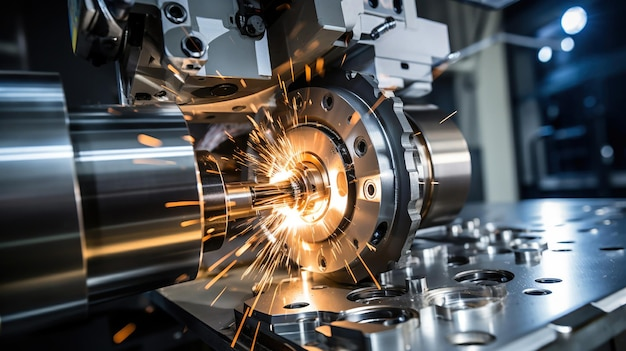Precision Steel Processing: Key Components of a High-Quality Slitting Line

Introduction
In the world of metal processing, precision is paramount, particularly when it comes to steel. The slitting line is an essential piece of equipment that transforms wide steel coils into narrower strips, known as mults, tailored for various applications. This article delves into the intricacies of slitting lines, exploring their components, the slitting process, and the advantages of investing in high-quality machinery for optimal efficiency and precision.
Understanding Slitting Lines
A slitting line is designed specifically to cut wide rolls of steel into narrower strips, which are essential for a multitude of industries, including automotive, construction, and appliance manufacturing. The process of slitting not only involves cutting but also requires a series of coordinated components to ensure that the final product meets stringent specifications.
Key Components of a Slitting Line
- Decoiler
- The decoiler is responsible for unwinding the master coil and feeding it into the slitting section. It ensures a smooth and controlled flow of material, minimizing the risk of deformation during the initial stages of processing.
- Slitter
- The heart of the slitting line, the slitter consists of rotary knives that precisely cut the metal into desired widths. The configuration and sharpness of these knives are crucial for achieving clean edges and accurate dimensions.
- Tensioning Device
- This component maintains the appropriate tension on the material as it moves through the slitting line. Proper tensioning prevents issues like camber and ensures that the strips remain straight and uniform.
- Recoiler
- After the slitting process, the recoiler rewinds the slit strips into smaller coils, making them easier to handle and transport. The recoiling process must be executed carefully to avoid any stress or damage to the material.
The Slitting Process Explained
The slitting process is a systematic operation that involves several steps, each requiring precision and attention to detail.
- Loading and Decoiling
- The process begins with loading a large coil onto the decoiler. As the coil unwinds, it feeds the metal into the slitting section, setting the stage for the subsequent cutting operations.
- Slitting
- The unwound sheet of steel passes through the slitter where rotary knives slice it into narrower mults. The configuration of the knives can be adjusted to achieve different widths based on customer specifications.
- Tensioning
- As the material is being cut, the tensioning device ensures that the strips are kept taut. This step is vital for preventing any deformation, which could compromise the quality of the final product.
- Recoiling
- Finally, the slit strips are rewound into smaller coils by the recoiler. This step not only facilitates easier handling but also prepares the material for further processing or delivery to clients.
Applications of Slitting Lines
Slitting lines have a wide range of applications across various sectors, making them indispensable in modern manufacturing.
Automotive Industry
In the automotive sector, slit steel strips are integral to the production of components such as car frames, body panels, and structural elements. The precision offered by slitting lines ensures that manufacturers can produce parts that meet stringent safety and performance standards.
Construction Sector
The construction industry relies heavily on narrow metal strips for fabricating pipes, tubes, and other structural components. The ability to customize widths and thicknesses in real-time allows manufacturers to meet specific project requirements efficiently.
Appliance Manufacturing
Household appliances, including refrigerators and washing machines, also utilize slit steel. The versatility of slitting lines enables appliance manufacturers to source materials that meet their unique specifications, thereby enhancing product quality.
Advantages of High-Quality Slitting Lines
Investing in a high-quality slitting line offers numerous benefits that can significantly impact production efficiency and cost-effectiveness.
Enhanced Durability
High-quality slitting lines are constructed with robust materials, ensuring longevity and reliability. This durability minimizes the need for frequent repairs and replacements, resulting in lower operational costs over time.
Precision Cutting
The ability to achieve high levels of accuracy in cutting is one of the most significant advantages of modern slitting lines. This precision reduces material waste and ensures that each strip meets the exact specifications required by clients.
Customization Options
A flexible slitting line can accommodate various materials and widths, allowing manufacturers to adapt to changing market demands swiftly. Customization capabilities are vital for businesses looking to maintain a competitive edge.
Increased Efficiency
Advanced slitting lines are designed to minimize downtime and maximize output. Features such as automated adjustments and real-time monitoring contribute to higher productivity, making them a worthwhile investment for manufacturers.
The Role of Technology in Slitting Lines
Technological advancements have revolutionized the slitting process, enhancing both efficiency and precision.
Automation and Control Systems
Modern slitting lines are equipped with sophisticated automation and control systems that streamline operations. These systems allow for real-time adjustments and monitoring, significantly reducing the likelihood of errors.
Advanced Software Solutions
The integration of software solutions enables manufacturers to optimize their slitting processes. From scheduling maintenance to analyzing production data, advanced software enhances decision-making and operational efficiency.
Robotics and AI
Incorporating robotics and artificial intelligence into slitting lines can further improve efficiency. Automated systems can handle repetitive tasks, allowing human operators to focus on more complex responsibilities.
Maintenance of Slitting Lines
Regular maintenance is crucial for the longevity and optimal performance of slitting lines. A well-maintained machine not only operates more efficiently but also produces higher-quality products.
Routine Inspections
Conducting routine inspections helps identify wear and tear before it becomes a significant issue. Regular checks on components such as knives, tensioning devices, and recoilers ensure that the slitting line operates smoothly.
Calibration
Regular calibration of the machinery is essential for maintaining precision. Misalignment can lead to increased scrap rates and reduced product quality, making calibration a critical aspect of maintenance.
Cleaning and Lubrication
Keeping the machinery clean and well-lubricated is vital for preventing breakdowns. Regular cleaning reduces the risk of contamination, while lubrication minimizes friction and wear on moving parts.
Choosing the Right Slitting Line Supplier
Selecting a reputable supplier for your slitting line is crucial to ensuring your production process runs smoothly. Here are some factors to consider when making your choice.
Experience and Expertise
A supplier with a proven track record in the industry is more likely to understand the nuances of slitting technology. Their experience can guide you in selecting the right machinery for your specific needs.
Customization Capabilities
Look for suppliers that offer customizable solutions. Every production line is unique, and having the ability to tailor a slitting line to your specifications can significantly enhance your operational efficiency.
Support and Service
Post-purchase support is essential for maintaining the performance of your slitting line. Choose a supplier that offers comprehensive services, including installation, training, and ongoing maintenance.
Future Trends in Steel Slitting Technology
The steel processing industry is continuously evolving, with new trends shaping the future of slitting technology.
Increased Automation
As technology advances, the trend towards automation in slitting lines is likely to grow. Fully automated systems will not only enhance efficiency but also reduce the risk of human error.
Sustainable Practices
With a growing emphasis on sustainability, the steel processing industry is exploring eco-friendly practices. Innovations in slitting technology that reduce waste and energy consumption will become increasingly important.
Advanced Materials
The development of new materials may also influence slitting line technology. As manufacturers seek to produce lighter and stronger materials, slitting lines will need to adapt to accommodate these changes.
Conclusion
Precision steel processing through high-quality slitting lines is integral to various industries. By understanding the components, benefits, and future trends associated with slitting lines, manufacturers can make informed decisions that enhance their production capabilities. Investing in advanced technology and reliable suppliers will ensure that businesses remain competitive in a rapidly evolving market.
Frequently Asked Questions (FAQs)
What materials can be processed on a slitting line?
Slitting lines are versatile and can process a variety of metals, including steel, aluminum, and copper, making them suitable for multiple applications.
How long does it take to set up a slitting line?
The setup time for a slitting line can vary based on the complexity of the machinery and specific production requirements. However, suppliers often provide detailed support to minimize this time.
Can slitting lines be customized?
Yes, many suppliers offer customizable slitting lines that can be tailored to meet specific production needs, including adjustments in width and material type.
What maintenance is required for a slitting line?
Regular maintenance tasks include cleaning, lubrication, and periodic inspections to ensure that all components function optimally and to extend the lifespan of the equipment.
How can I request a quote for a slitting line?
To request a quote, you can contact suppliers directly through their websites or by phone. They will work with you to understand your needs and provide a tailored solution.
This article serves as a comprehensive guide to understanding the significance of slitting lines in precision steel processing. By emphasizing the various components, benefits, and technological advancements, it aims to inform and engage readers while adhering to SEO best practices.


